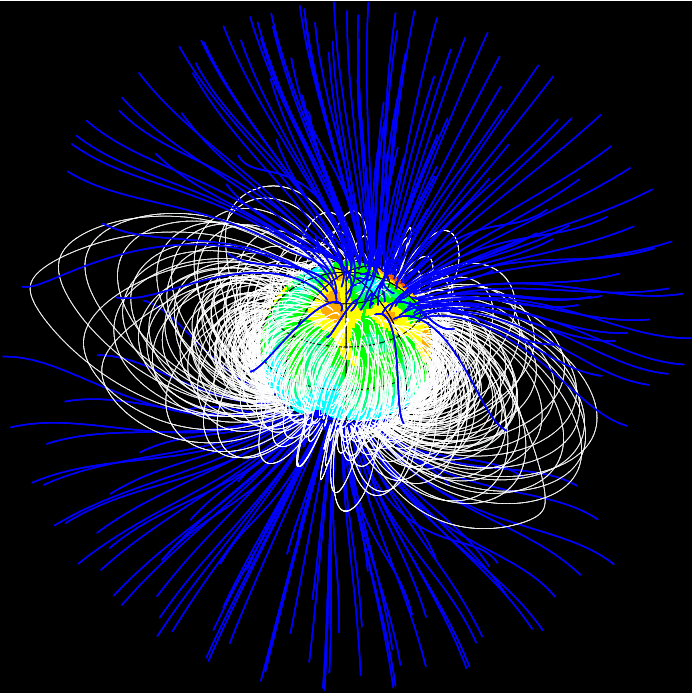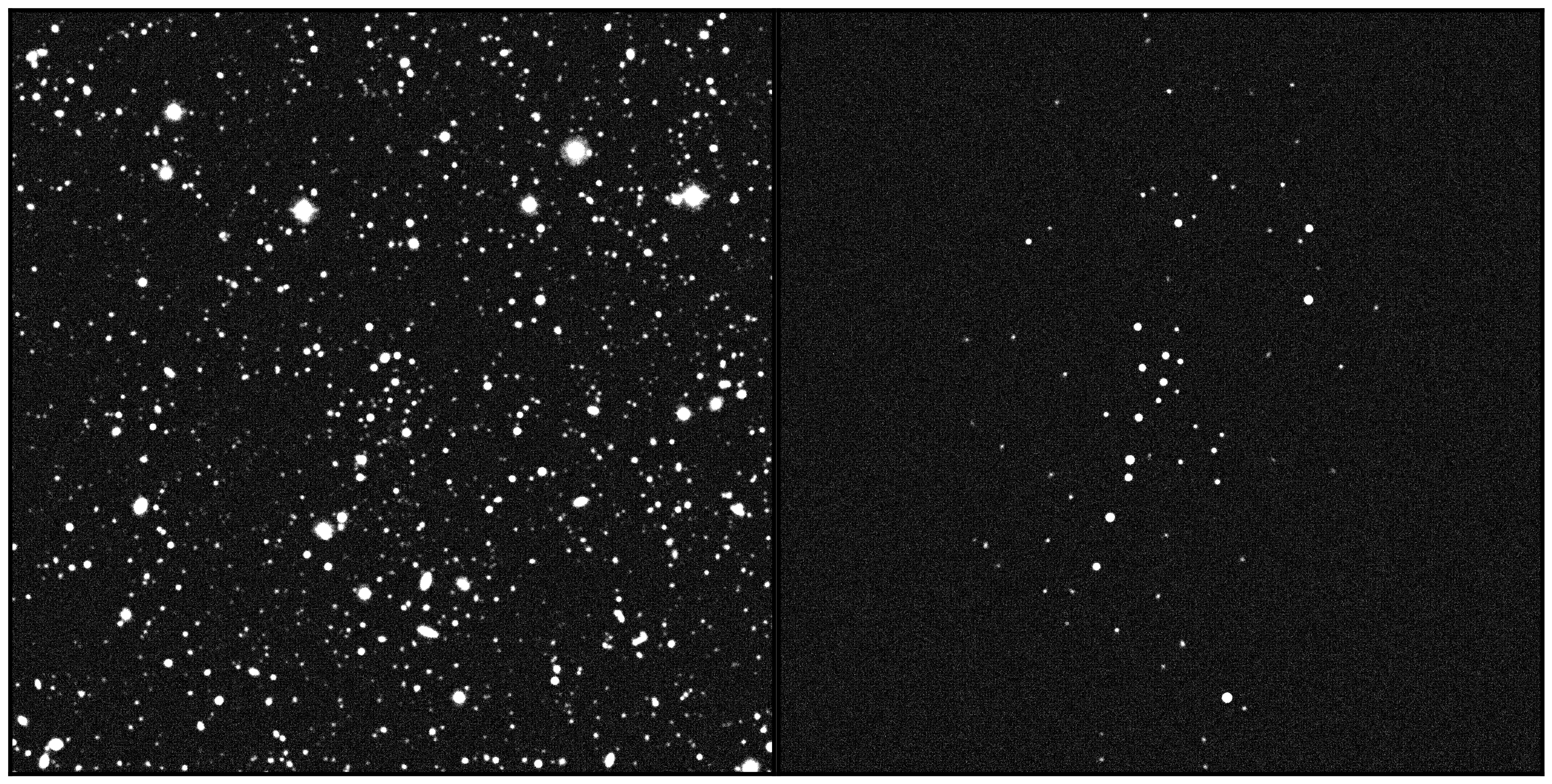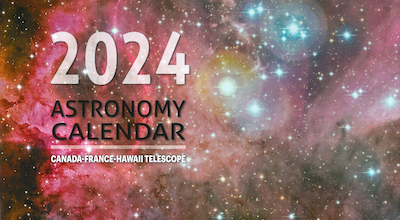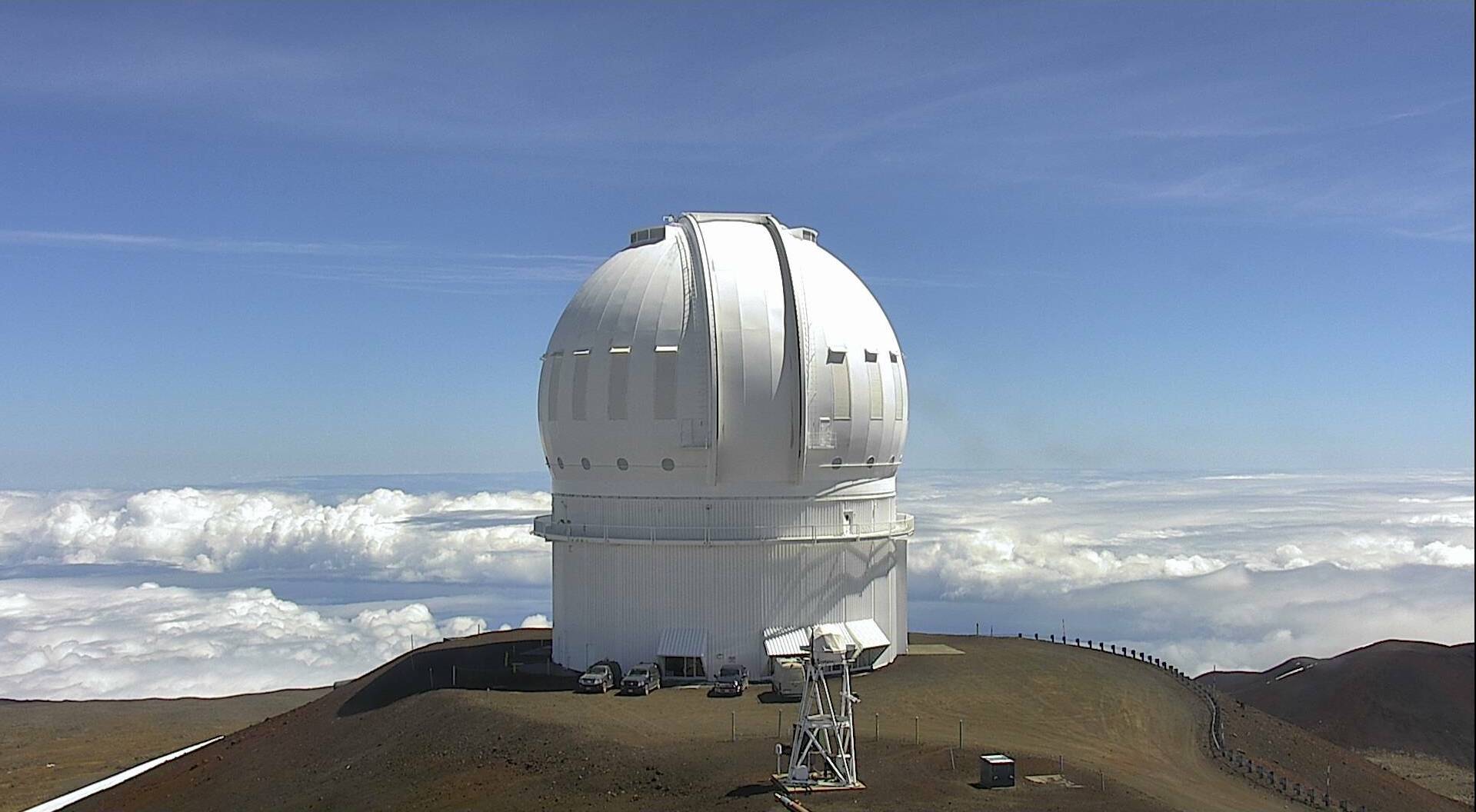Hot Jupiters courting baby stars?
September 9th 2015
Although first detected 20 years ago, hot Jupiters are still enigmatic bodies. These celestial objects are giant Jupiter-like exoplanets that orbit 20 times closer to their host stars than the Earth does to the Sun. Using the ESPaDOnS spectro-polarimeter on the Canada-France-Hawaii Telescope, the Matysse(1) team led by Dr J.-F. Donati (Toulouse, CNRS) reports the preliminary evidence that a hot Jupiter orbits a 2-My star of the Taurus star forming region. This planet, yet to be confirmed, has a mass of 1.4 Jupiter mass and a 6-day period orbit and is unveiled by the gravitational pull it imprints on its star(2), once the stellar activity features are modeled. This discovery(3) could help us better understand how planetary systems like (or unlike) the solar system form and evolve into maturity. This could also be the first exoplanet ever revealed by CFHT, a nice introduction to the coming SPIRou(4) planet search survey.
In our solar system, rocky planets like the Earth or Mars are found near the Sun whereas giant planets like Jupiter and Saturn orbit much further out. "Hence the surprise in 1995 when Mayor & Queloz first unveiled a giant planet sitting very close to its host star" says Dr C. Moutou, CNRS astronomer at CFHT and co-author of this new study. Since then, astronomers demonstrated that such planets must form in the outer regions of the protoplanetary disc, then migrate inwards and yet avoid falling into their host star. This could happen either very early in their lives, when still embedded within their primordial disc. Or much later, once multiple planets are formed and mutually interact in a rather unstable choreography - with some being pushed inwards at the immediate vicinity of their stars.


Star surface and planet (top) and magnetic field lines (bottom) at the surface of V830 Tau as reconstructed from ESPaDOnS observations.
|
An international team of astronomers led by Dr J.-F. Donati just secured preliminary evidence supporting the first of these two scenarios. Using ESPaDOnS, a spectropolarimeter built by IRAP / OMP for the CFHT, they looked at newly-born stars in the Taurus stellar nursery about 450 light-years away from us. They showed that the latest baby star they scrutinized, nicknamed V830 Tau, exhibits signatures that closely resemble those caused by a 1.4 Jupiter-mass planet orbiting 15 times closer to its host star than the Earth does to the Sun. This discovery, published in MNRAS, provides preliminary evidence that hot Jupiters may be extremely young and far more frequent around very young stars than around mature Sun-like stars.
Although potentially very informative about planet formation, young stars are extremely challenging to observe. "Being enormously active and strongly magnetic, baby stars are covered with huge spots hundreds of times wider than those of our Sun, which generate perturbations in their spectra much larger than those caused by orbiting planets. As a result, their planets are quite tricky to detect, even in the case of hot Jupiters", outlines E. Hebrard, PhD student at IRAP / OMP and co-author of the study. To address this issue, the team initiated the MaTYSSE survey aimed at mapping the surfaces of baby stars and at looking for the potential presence of hot Jupiters. "By monitoring these stars and using tomographic techniques inspired from medical imaging, we can unveil how dark and bright features are distributed across their surfaces, and how their magnetic fields expand into space. This modeling allows us to compensate for the perturbations that spots and fields generate in the spectra of young stars, and thus to regain the power of diagnosing the presence of close-in giant planets", explains Dr G. Hussain (ESO, UFTMiP), co-author of the study. In the case of V830 Tau, the authors accurately modeled the surface field and spots in order to clean out their polluting effects, enabling them to discover the much weaker signal that hints at the presence of a giant planet. Although more data are required for a definite validation, this promising first result clearly demonstrates that the technique the team devised is powerful enough to solve the puzzling question of how hot Jupiters form. " SPIRou, the new instrument currently built for CFHT by our team and scheduled for first light in 2017, will offer vastly superior performances thanks to its operation at near infrared wavelengths, at which young stars are far brighter, and will allow us to address this long-standing problem with unprecedented accuracy", Dr J.-F. Donati concludes.

CFHT with a CAD view of SPIRou - the forthcoming spectropolarimeter in construction at OMP/IRAP (not to scale - credit JC Cuillandre for the CFHT image)
|
Additional information
- 1. Matysse (Magnetic Topologies of Young Stars and the Survival of close-in giant Exoplanets) is a CFHT Large Program started in 2013 with ESPaDOnS. Matysse is a collaboration led by J.F. Donati (IRAP, Obs Midi-Pyrenees, France) with astronomers from IPAG (Grenoble, F), ENS (Lyon, F), CEA (Saclay, F), LAM (Marseille, F), OCA (Nice, F), UdM (Montreal, C), UFMG (Belo Horizonte, B), ASIAA (Taipei, T), NAO (Beijing, C) and many associated scientists outside the CFHT community.
- 2. The radial-velocity method uses the gravitational pull on the star by the planet modulated by its orbital motion, and measures the resulting spectral shift of the star with respect to the observer using the Doppler effect. This effect is of the order of 100 m/s for a hot Jupiter as the putative V 830 b and is repeatable at the period of the orbit - here, about 6 days.
- 3. The full paper is accepted in the Monthly Notices of the Royal Astronomical Society (MNRAS, Oxford University Press); it is entitled: "Magnetic activity and hot Jupiters of young Suns: the weak-line T Tauri stars V819 Tau and V830 Tau", by J.-F. Donati, E. Hebrard, G. Hussain, C. Moutou, L. Malo, K. Grankin, A. Vidotto, S. Alencar, S.G. Gregory, MM. Jardine, G. Herczeg, J. Morin, R. Fares, F. Menard, J. Bouvier, X. Delfosse, R. Doyon, M. Takami, P. Figueira, P. Petit, I. Boisse and the MaTYSSE collaboration, and is accessible here.
- 4. SPIRou i is a near-infrared spectropolarimeter and a high-precision velocimeter optimized for both the detection of habitable Earth twins orbiting around nearby red dwarf stars, and the study of forming Sun-like stars and their planets. SPIRou is managed in the framework of an international consortium led by France and involving, in addition to the Canada-France-Hawaii Telescope (CFHT), Canada, Switzerland, Brazil, Taiwan and Portugal. The construction of SPIRou has started in 2015, with integration in Toulouse, France, scheduled for 2016 and first light at CFHT for 2017.
- This press release is also available as a pdf file with complementary illustrations.
Contacts:
Dr. Claire Moutou (CFHT, Hawaii)
moutou@cfht.hawaii.edu
1-808-885-7944
Dr. Lison Malo (CFHT, Hawaii)
malo@cfht.hawaii.edu
1-808-885-7944
Dr. Jean-Francois Donati (IRAP, Toulouse, France)
jean-francois.donati@irap.omp.eu
33-561-332-917






